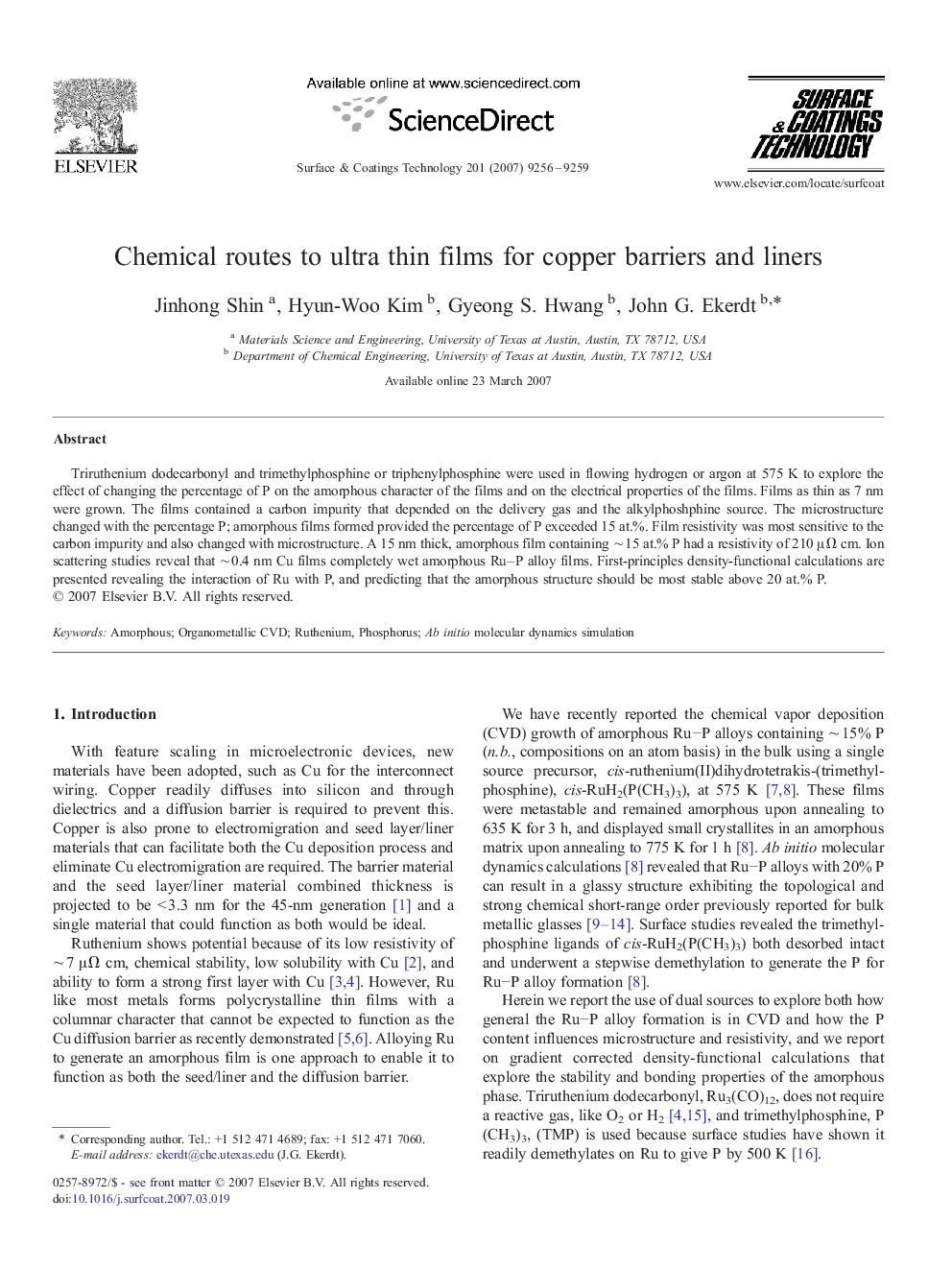| Article ID | Journal | Published Year | Pages | File Type |
|---|---|---|---|---|
| 1662333 | Surface and Coatings Technology | 2007 | 4 Pages |
Triruthenium dodecarbonyl and trimethylphosphine or triphenylphosphine were used in flowing hydrogen or argon at 575 K to explore the effect of changing the percentage of P on the amorphous character of the films and on the electrical properties of the films. Films as thin as 7 nm were grown. The films contained a carbon impurity that depended on the delivery gas and the alkylphoshphine source. The microstructure changed with the percentage P; amorphous films formed provided the percentage of P exceeded 15 at.%. Film resistivity was most sensitive to the carbon impurity and also changed with microstructure. A 15 nm thick, amorphous film containing ∼ 15 at.% P had a resistivity of 210 μΩ cm. Ion scattering studies reveal that ∼ 0.4 nm Cu films completely wet amorphous Ru–P alloy films. First-principles density-functional calculations are presented revealing the interaction of Ru with P, and predicting that the amorphous structure should be most stable above 20 at.% P.
